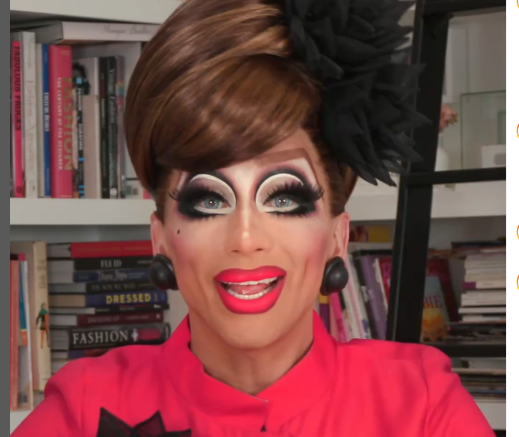With her razor-sharp wit and gutsy approach to comedy, Bianca Del Rio has established a reputation for pushing boundaries in ways that leave audiences both amused and a little uneasy. Fans were therefore immediately intrigued when rumors circulated that she had broken up with Lady Bunny after more than 20 years of friendship. Framed by scandalous allegations of treachery, lawsuits, and underpaid ghostwriting, the story gained rapid traction.

The reports initially presented a dramatic image that was all too comparable to actual celebrity feuds. Bunny allegedly chose to revoke their 25-year bond and even go to court, alleging that she had been working behind the scenes as a showwriter for Bianca for little more than minimum wage. The suggestion that Bianca’s sold-out tours were based on someone else’s handwriting was a very powerful attention-getter.
Bianca Del Rio: Key Information
| Detail | Information |
|---|---|
| Full Name | Roy R. Haylock |
| Stage Name | Bianca Del Rio |
| Date of Birth | June 27, 1975 – Age 50 |
| Birthplace | New Orleans, Louisiana, U.S. |
| Education | West Jefferson High School |
| Occupation | Drag Queen, Comedian, Actor, Costume Designer |
| Career Start | 1993 – Present |
| Major Achievement | Winner of RuPaul’s Drag Race Season 6 |
| Notable Work | It’s Jester Joke (2019) – First drag queen to headline Wembley Arena |
It was all an April Fool’s joke, carefully arranged to promote Lady Bunny’s new play April Fools at The Green Room in New York, but the punchline eventually came, and it was as sharp as Bianca’s tongue on stage. As evidence of how thoroughly the queens had capitalized on the public’s infatuation with celebrity breakups, fans who had originally gasped at the scandal ended up giggling at their own propensity to accept it.
The satire was effective on multiple levels. It made fun of the public’s insatiable desire for drama, drew attention to the writers’ and collaborators’ common lack of visibility in entertainment, and reminded viewers that drag survives on parody. Bunny and Bianca demonstrated how readily scandal can be created and devoured by transforming gossip culture into performance art through the use of a fictitious rivalry.
The narrative also emphasizes Bianca’s lasting influence on culture. She has accomplished milestones since winning season six of RuPaul’s Drag Race, which has significantly increased drag’s presence in popular culture. Drag comedy was able to fill arenas that were previously reserved for rock musicians because to her sold-out tours, which included the incredibly successful It’s Jester Joke in 2019. Not only did she create history by performing as the main act at Wembley Arena, but she also changed people’s ideas about what drag performances might achieve on a commercial level.
Bianca’s flexibility is further demonstrated by the fictitious breakup. Bianca was getting ready to take on a theatrical challenge—an off-Broadway role in Tartuffe starring Matthew Broderick and Amber Gray—while Bunny was using scandal to promote her show. This change demonstrates the remarkable versatility of drag artists like as Bianca, who effortlessly segue between comedy, theater, and television.
Additionally, the joke deftly referenced a broader entertainment narrative. Discussions over proper compensation, credit, and ghostwriting are not unique to drag; they are present in pop music and stand-up comedy, among other sectors. Bunny brought attention to very serious issues by feigning a lawsuit over stolen jokes, producing a parody that was remarkably obvious in its goal and surprisingly inexpensive for fans to enjoy.
These kinds of moments have social resonance as well. Online arguments about supporting Bunny or defending Bianca broke out during the brief moment when followers believed the conflict to be real. The fervor of the response revealed how deeply devoted fans are to drag culture, seeing queens with the same respect and attention as Hollywood stars. Fans became closer to the artists once the hoax was revealed because of their mutual relief and laughter, which significantly enhanced the fan-performer interaction overall.
Additionally, Bianca’s story relates to a larger trend of how celebrities shape media narratives. While contemporary celebrities like Taylor Swift have their personal lives scrutinized with forensic rigor, Madonna, for instance, has leveraged scandal for decades to maintain her cultural relevance. This culture of sensationalism was mocked by Bianca and Bunny’s April Fool’s joke, which demonstrated that even fictitious rivalries can be produced and marketed like theater tickets.
The impression that drag is still incredibly successful at reflecting society is what endures when the laughter stops. Queens like Bianca and Bunny serve as a reminder that performance has the power to influence our perception of reality, whether it is through escalating scandal or turning rumors into humor. In a time when even the most ridiculous reports may be believed, their prank served as both entertainment and a commentary on the workings of celebrity, trust, and storytelling.
